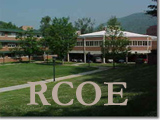Artifact # 15
Technologies for Children with Special Needs
Context
In
class we were able to change the settings on our computer to a different
appearance that might be beneficial to a student with
special
needs. By going to the Control Panel, we then went to
Accessibility
Options, which allowed us to alter the Contrast of the
screen.
What appeared to be a distracting screen to us, in regard to the
color, would be a more appealing screen to a student with
a
visual impairment. We also manipulated the mouse access to
make
it more accessible for a student with tactile difficulties, by
going
to the Control Panel and clicking on the “mouse” icon. We
then
changed the mouse to be easier for a left-handed person to
use.
The web sites that we visited on the Internet, www.ldonline.org
and
www.checkitout.org/assist.cfm, provided information about
students
with learning disabilities.
Impact
As
a teacher, I will encounter many students with Special Needs. I
will
want to offer a way for all students to benefit from the
computer,
so knowing how to change certain aspects of the
computer
will be helpful. I want to know how to make the
computer
a useful resource for all students, and knowing how to
make
the computer easy to use, even by students with handicaps
or
disabilities, will be helpful. Assistive Technology is any item,
piece
of equipment or product system, whether acquired
commercially
off the shelf, modified, or customized, that is used to
increase,
maintain, or improve functional technological
equipment
to be accessible by all students. For example, a
student
with a visual impairment would benefit from having a
computer
with speakers that reads the text out loud so the students
can
hear the information without having to read it. Also, a student with
a physical disability would be more successful on a computer
with
a mouse that did not require much movement to make it
work.
A scrolling mouse would help in this situation.
Alignment
This
assignment meets Competency 13.2 because I
am able to use media and technology to support learning for children with
special needs. I can now alter the computer settings to make them
more
appealing,
visually and physically, for students who may be blind,
have
low vision, tactile disabilities or have developmental delay.
This
assignment meets INTASC Principle #3 because
the teacher
understands
the differences of all students and provides alternate
material
for students will special needs.
